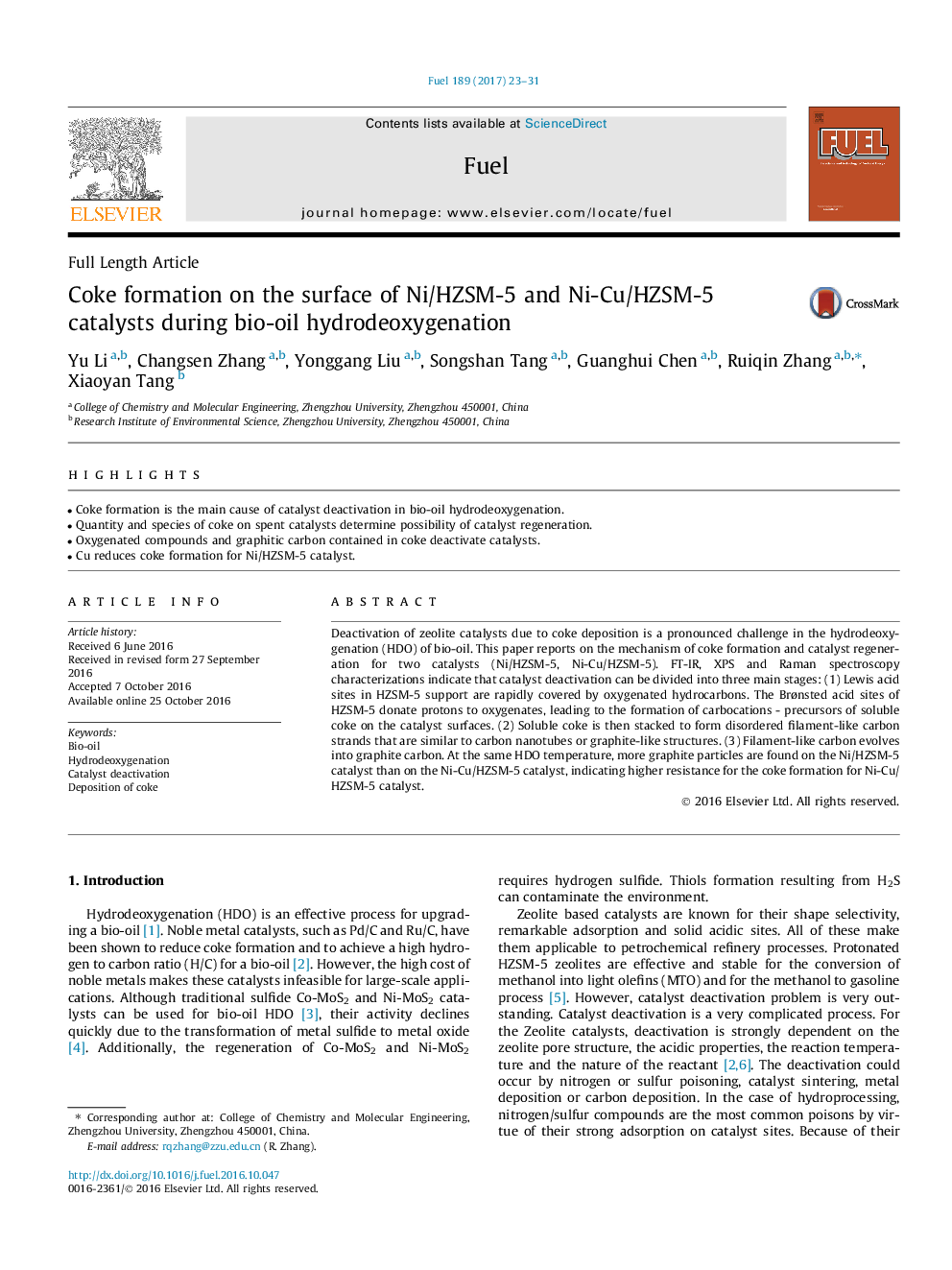| Article ID | Journal | Published Year | Pages | File Type |
|---|---|---|---|---|
| 6475651 | Fuel | 2017 | 9 Pages |
â¢Coke formation is the main cause of catalyst deactivation in bio-oil hydrodeoxygenation.â¢Quantity and species of coke on spent catalysts determine possibility of catalyst regeneration.â¢Oxygenated compounds and graphitic carbon contained in coke deactivate catalysts.â¢Cu reduces coke formation for Ni/HZSM-5 catalyst.
Deactivation of zeolite catalysts due to coke deposition is a pronounced challenge in the hydrodeoxygenation (HDO) of bio-oil. This paper reports on the mechanism of coke formation and catalyst regeneration for two catalysts (Ni/HZSM-5, Ni-Cu/HZSM-5). FT-IR, XPS and Raman spectroscopy characterizations indicate that catalyst deactivation can be divided into three main stages: (1) Lewis acid sites in HZSM-5 support are rapidly covered by oxygenated hydrocarbons. The Brønsted acid sites of HZSM-5 donate protons to oxygenates, leading to the formation of carbocations - precursors of soluble coke on the catalyst surfaces. (2) Soluble coke is then stacked to form disordered filament-like carbon strands that are similar to carbon nanotubes or graphite-like structures. (3) Filament-like carbon evolves into graphite carbon. At the same HDO temperature, more graphite particles are found on the Ni/HZSM-5 catalyst than on the Ni-Cu/HZSM-5 catalyst, indicating higher resistance for the coke formation for Ni-Cu/HZSM-5 catalyst.
